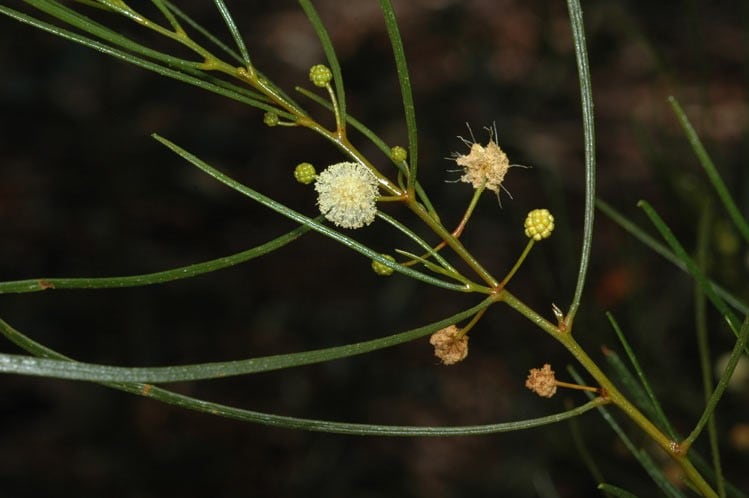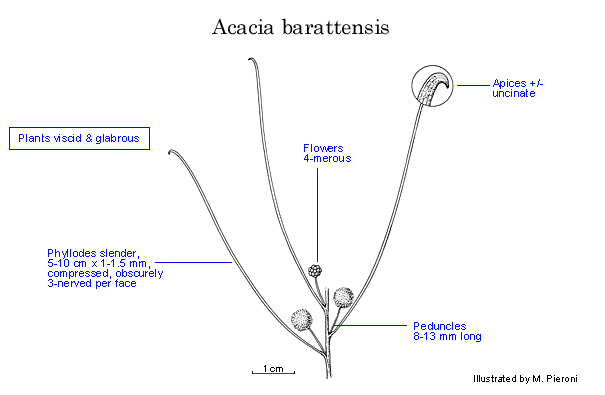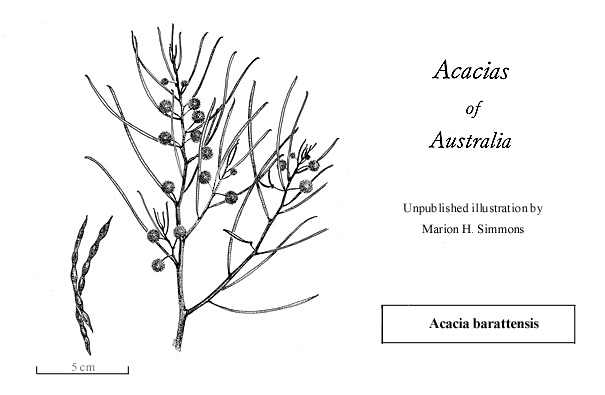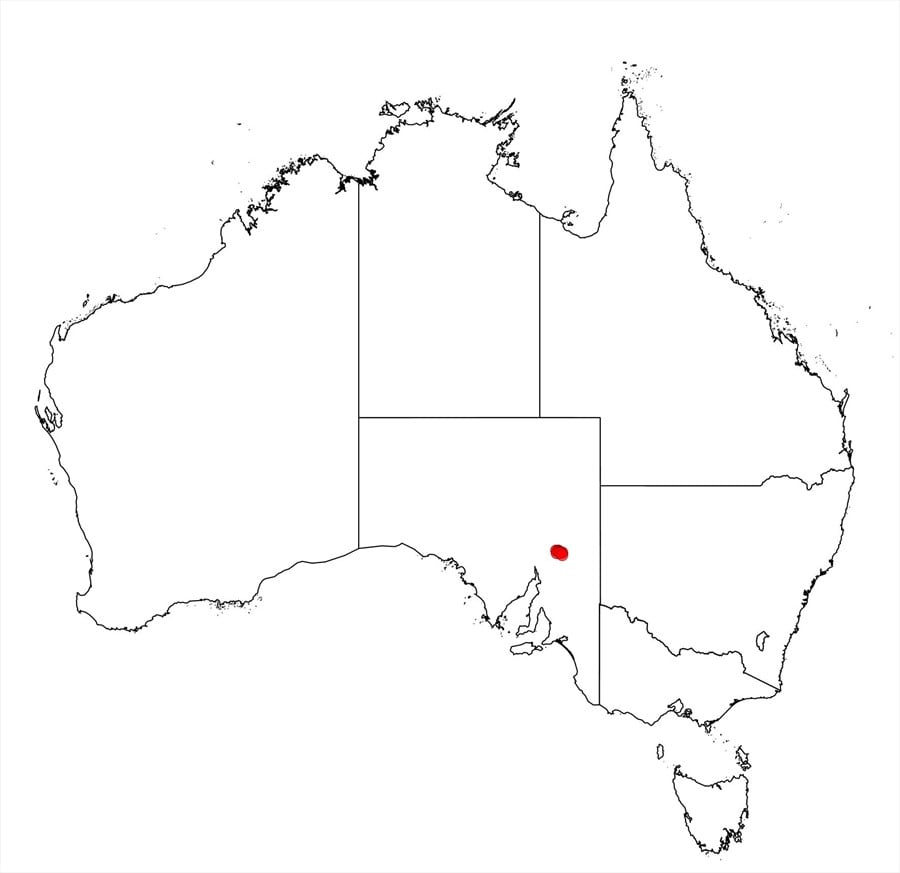Acacia barattensis J.M.Black
WATTLE
Acacias of Australia
Common Name
Baratta Wattle
Family
Fabaceae
Distribution
Restricted to the Flinders Ra., S.A. A rare species which, until recently, was thought to be extinct.
Description
Diffuse viscid glabrous shrub 2–3 m high. Branchlets slender, commonly covered with a black sooty substance. Phyllodes erect, slender, narrowly linear, mostly shallowly incurved, compressed, 5–10 cm long, 1–1.5 mm wide, ±uncinate, with a strong resin odour, obscurely 3-nerved per face; gland 1–2 mm above pulvinus. Inflorescences simple, 1 or 2 per axil; peduncles 8–13 mm long; basal bract c. 0.5 mm long; heads globular, 20–30-flowered, pale yellow. Flowers 4-merous; sepals c. 3/4-united; calyx lobes triangular. Pods linear, constricted between seeds, to 15 cm long, 2.5–3.5 mm wide. Seeds longitudinal, oblong-elliptic, 4.5 mm long; funicle folded; aril thick.
Habitat
Occurs in skeletal soil between outcropping quartzite on slopes of rocky gulleys and along creeklines, in association with Eucalyptus flindersii, E. camaldulensis and Callitris glaucophylla.
Specimens
S.A.: Baratta Stn, D.J.E.Whibley 4454 (PERTH).
Notes
This species is fully described and discussed by M.D.Crisp, Trans. & Proc. Roy. Soc. S. Australia 100: 117 (1976). Distinguished from other members of the ‘A. wilhelmiana group’ by its 4-merous flowers. Acacia gracilifolia has similarly long, narrow phyllodes.
FOA Reference
Data derived from Flora of Australia Volumes 11A (2001), 11B (2001) and 12 (1998), products of ABRS, ©Commonwealth of Australia
Author
B.R.Maslin
This identification key and fact sheets are available as a mobile application:
URL: https://apps.lucidcentral.org/wattle/
© Copyright 2018. All rights reserved.












